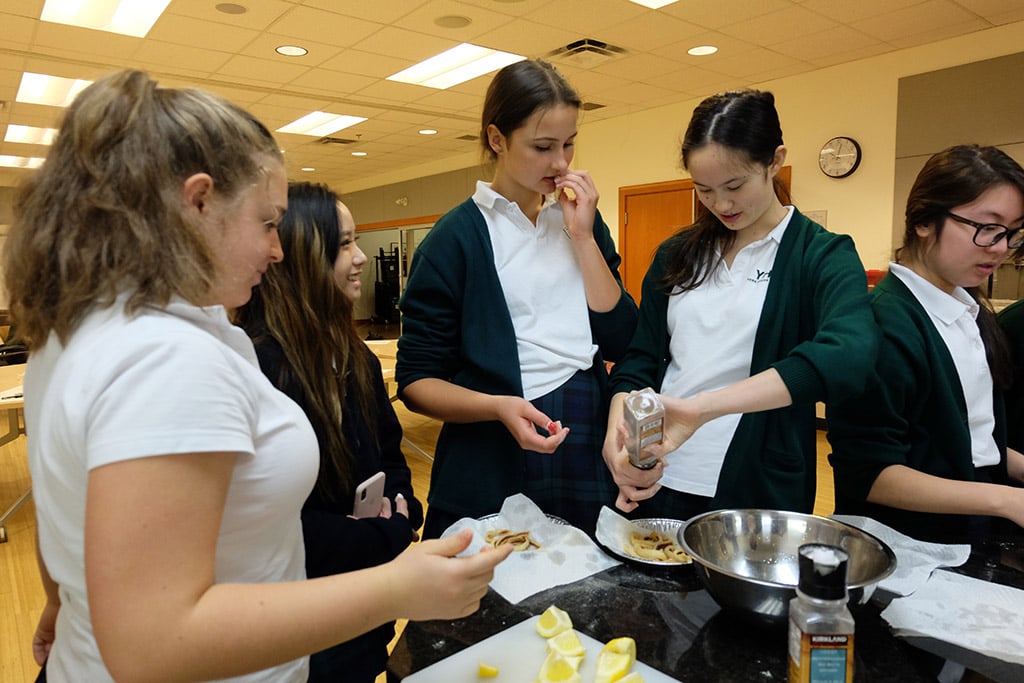Biology 11 Dissection
The class was mesmerized by the sight of the cuttlefish’s dazzling camouflage display. Rainbow ripples shimmered down its body while the girls watched, exclaiming to their seat partner in surprise when a perfectly disguised cuttlefish popped into view to snag a fish with its tentacles.
As part of our exploration of the animal kingdom in Biology 11, the students have been fully engaged while watching videos of a variety of animals in action. We’ve been discussing evolutionary trends in animals over time, often asking about how the structures of each group builds on the body plan of the group before. My next question, therefore, caught them a little off guard.
“Who likes calamari?” I asked. Several hands shot enthusiastically in the air, a few others raised slowly, while one or two girls sat with puzzled expressions. “I don’t think I’ve ever had it…” they said. “Well… now’s your chance, because we have another dissection coming up,” I explained. “We’re going to be dissecting squid as part of our study of molluscs. After we’ve examined it, we’re going to fry it up… and eat it!” The class immediately began to buzz with comments, some delighted, some a little nervous. “Meet me in Mira’s Kitchen next class, and bring an appetite!”
On our cook-up/dissection day, we dutifully washed our hands and began with exploring our food scientifically. Several years ago, the Science Department purchased a set of cooking knives and a small deep fryer to be able to give students the chance to really experience the squid dissection on a new level. It’s easy to make it seem as though ocean creatures are far removed from our lives, when in reality they are a part of our culture as much as our ecosystem. The girls had a chance to check out the squid beak (remarkably like a bird’s beak), the eyes (so similar to our own), and the hearts (a squid has three!). Purchased from my local grocery store, squid are great to study. Their soft bodies are easy to open, and the organs are laid out very clearly. Each group even had the chance to remove the squid “pen” — a primitive backbone-like structure made of a clear, flexible material — then dip it into the squid’s ink sac and write their names with squid ink.
After the parts had been examined, it was time to remove the organs, slice up the squid’s body covering (called the mantle) and start cooking. Each group washed and dried their pieces, dredged them in flour, and dropped them carefully in the deep fryer with my help. In no time, they had a nice snack of calamari, served with lemon, salt, pepper, and oregano. While some were not a fan of the taste, almost everyone in the class gave it a try, and those who loved it made sure to take full advantage of the experience. “Are you going to eat your tentacles?” one student asked. Her group made sure that none of the edible parts of the squid went to waste, leaving them with a delicious dish of squid to share.
While I do apologize to the rest of the school for temporarily making the lower floor smell like a fast-food restaurant, it was a delightful experience as a teacher to see my students so enthusiastic about having their dissection and eating it too. For our earthworm dissection, however, we’ll stick to exploring them by sight and feel only!
Lisa Marcos
Biology Teacher





















